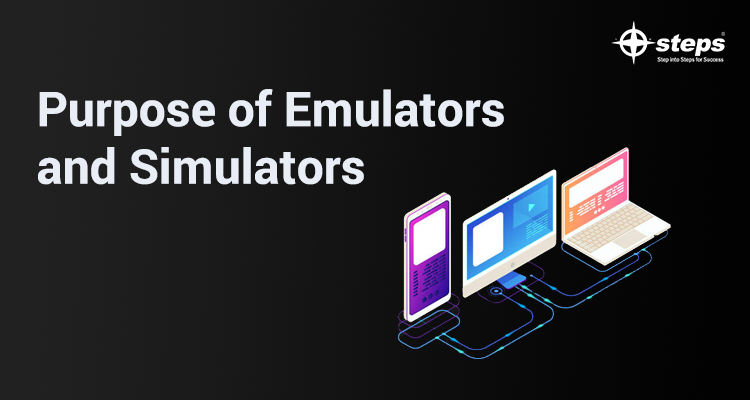Purpose of Emulators and Simulators
In the world of software testing, it’s commonplace to hear folks talk about simulators and emulators as if the terms are identical. To a certain amount, that makes sense. Simulators and emulators are related in many ways, and the inequality between them doesn’t always matter from the aspect of a test engineer.
But the fact remains that simulators and emulators are different beasts. If you want to make the very most of each type of software testing tool, it’s critical to explain what makes simulators different from emulators, and why you’d accept to use one or the other.
Emulators and simulators both make it available to run software tests inside flexible, software-defined environments. In this way, they allow you to run tests more immediately and quickly than you could if you had to set up a real hardware device.
That is why simulators and emulators are commonly used to achieve most software tests. Real-device testing turn to be accomplished only late in the software delivery pipeline, just before releasing software into production.
That way, you can take asset of the speed and flexibility of assumed and repeated test environments for most software tests, while still getting the deep insight of real-device testing before you release your software to end-users.
Simulators vs. Emulators: How they’re Different
But the fact that simulators and emulators both handle comparable purposes does not mean that they work in exact ways. There is fundamental change between them. A simulator is designed to create an environment that accommodate all the software variables and composition that will exist in an application’s actual production environment.
However, simulators do not struggle to imitate the actual hardware that will host the application in production. Because simulators conceive only software environments, they can be clothed using high-level programming languages. In comparison, an emulator does try to mime all the hardware appearance of a production environment, as well as software features. To accomplish this, you commonly need to write an emulator using assembly language.
In a experience, then, you may think of emulators as occupying a center floor among simulators and actual devices. Whereas simulators only mimic environment features that can be constructed or correct using software, emulators mimic both hardware and software features.
Of course, because emulators may not do a perfect job of emulating the hardware and software of a production environment, they are not acting for real-device testing. They just grant you to set up an environment that is closer to the one you’d have on a real device
When to Use Simulators
Commonly, simulators are best for software testing scheme in which you’re focused on making sure that an application behave as normal when combine with external applications or environments.
For example, you may want to test an app’s capability to send data to another application. An assumed environment will commonly suffice for this, because the basic hardware configuration is unlikely to have much of an impact on data transactions for your application. In addition, if you want to make sure that an application’s intersection displays accordingly under different screen resolutions, imitated testing environments are convenient.
When to Use Emulators
On the other hand, emulators are most useful when you need to test how software collaborates with basic hardware, or a combo of hardware and software.
Learning from a scratch in a short period is also very important in the learning process. Training on testing tools in Kochi or any other places helps you to understand more in right way.
In depth knowledge of syllabus and practical gives more confidence. There are various Software Testing Automation course centers available. Picking up the right one is significant. Find out the Manual Testing training institute in Kochi for your better start.

